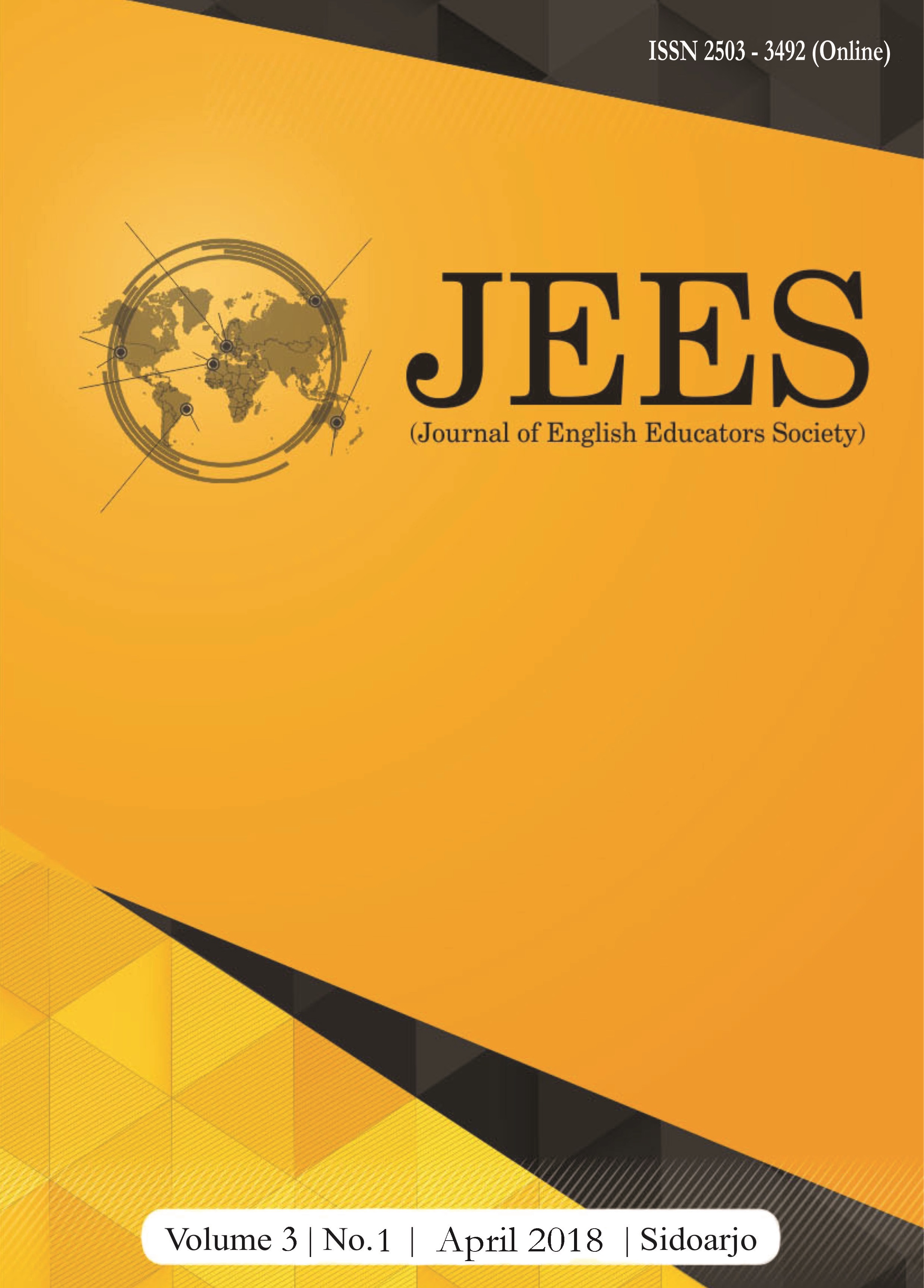Bridging the Gaps Between Students’ Prior Knowledge and Skills in Writing and the Expected Thesis Outcomes
Menjembatani Kesenjangan Antara Pengetahuan dan Keterampilan Awal Mahasiswa dalam Menulis dan Hasil Tesis yang Diharapkan
DOI:
https://doi.org/10.21070/jees.v2i2.982Keywords:
corrective feedback, problem-solving skill, peer review, thesis writingAbstract
This research aimed to seek the light on how the advisors made a use of feedback during supervisory panel and find out how different ways and types of feedback impacted on student-writers’ thesis outcomes. Qualitative study was applied by involving three tenured lecturers at College of Islamic Studies, in Java as the research subjects. Two data collection techniques were applied, such as interview and documentation, to trace evidence on what types of feedback used, how students noticed, and how they impacted on subsequent drafts. This study revealed that indirect feedback using error codes and commentary was the most frequent form used during the advisory session. However, the mere use of feedback could only serve a short-term impact on the development of writing, and even it seemed only to spoon-feed them which could create burdens in writing. It was quite evident that engaging them in such self-regulated and interdependence group works, through problem-solving discussion and peer review, was much worthier as compared to only ask them to process the feedback themselves.
Downloads
References
Bitchener, J. (2008). Evidence in support of written corrective feedback. Journal of Second Language Writing, 17, 102–118.
Bitchener, J., & Knoch, U. (2008). The value of written corrective feedback for migrant and international students. Language Teaching Research, 12(3), 409–431. https://doi.org/10.1177/1362168808089924
Hyland, K. (1990). Providing productive feedback. ELT Journal, 44(4), 279–285. https://doi.org/10.1093/elt/44.4.279
Hyland, K., & Hyland, F. (2006). Feedback on second language students’ writing. Language Teaching, 39(2), 83. https://doi.org/10.1017/S0261444806003399
Miles, M. B., & Huberman, A. M. (1994). Qualitative Data Analysis (2nd ed.). United States of America: SAGE Publications.
Min, H.-T. (2006). The effects of trained peer review on EFL students’ revision types and writing quality. Journal of Second Language Writing, 15(2), 118–141. https://doi.org/10.1016/J.JSLW.2006.01.003
Mufanti, R. (2012). Students’ Noticing of Corrective Feedback on Writing. 61st International TEFLIN. State University of Surabaya, Surabaya.
Mufanti, R. (2014). STUDENTS NOTICING OF CORRECTIVE FEEDBACK ON WRITING (Case study for low learner). In Prosiding International ’The 61st TEFLIN International. Solo: UNS. Retrieved from http://eprints.umpo.ac.id/2016/
Robson, C. (2000). Small-Scale Evaluation: Principles and Practice. London: Sage Publications.
Russell, J., & Spada, N. (2006). The effectiveness of corrective feedback for the acquisition of L2 grammar. (J. M. Norris & L. Ortega, Eds.), Synthesizing research on language. Amsterdam: Benjamins.
Sheen, Y. (2007). The Effect of Focused Written Corrective Feedback and Language Aptitude on ESL Learners’ Acquisition of Articles. TESOL Quarterly, 41(2), 255–283. https://doi.org/10.1002/j.1545-7249.2007.tb00059.x
Truscott, J. (1996). The case against grammar correction in L2 writing classes. Language Learning. Retrieved from http://onlinelibrary.wiley.com/doi/10.1111/j.1467-1770.1996.tb01238.x/full
Downloads
Published
How to Cite
Issue
Section
License
Copyright (c) 2017 Restu Mufanti, Andi Susilo

This work is licensed under a Creative Commons Attribution 4.0 International License.








